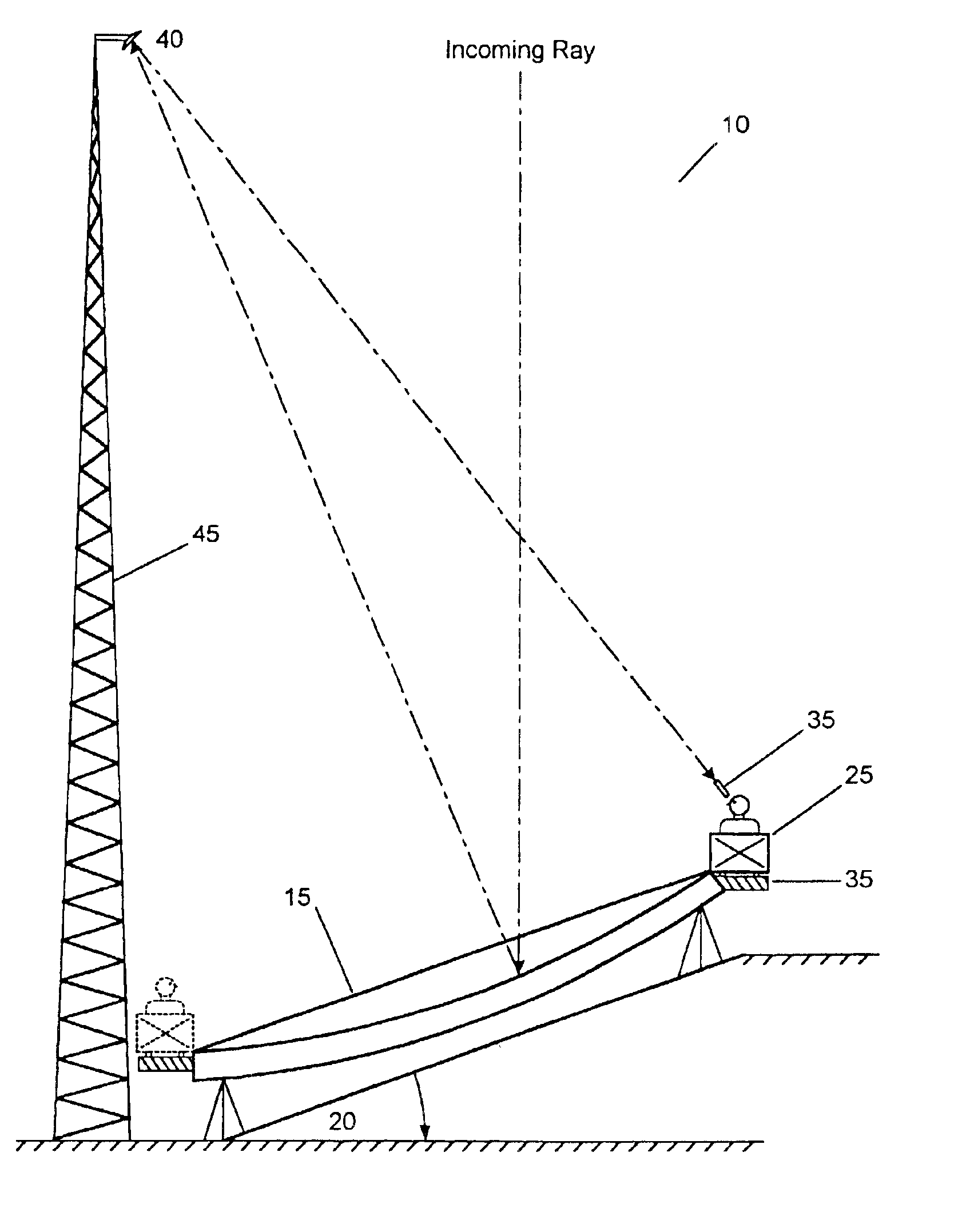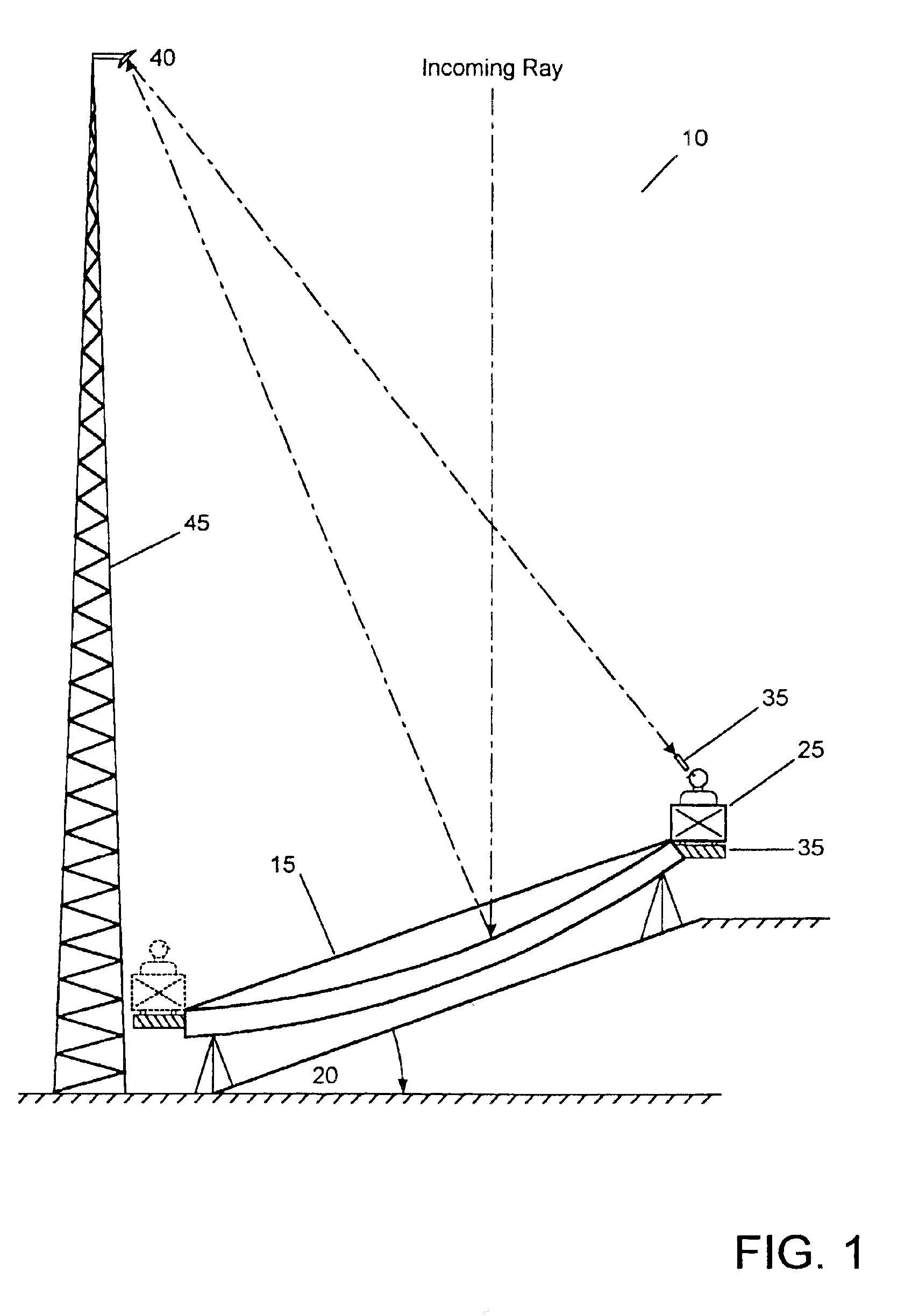Compound telescope with a stationary primary objective mirror having movable collectors
a primary objective mirror and telescope technology, applied in the field of optical telescopes, can solve the problems of delayed polishing of the mirror, high cost of the mirror, and inability to move the collector, so as to achieve the effect of less cost, large cost savings, and more stability
- Summary
- Abstract
- Description
- Claims
- Application Information
AI Technical Summary
Benefits of technology
Problems solved by technology
Method used
Image
Examples
Embodiment Construction
[0040]Of all the tools and instruments of science, there is none so grand or enduring as the telescope. By observing the heavens, a telescope brings us images of the past that say much about the present and provide clues about the future.
[0041]In FIG. 1, there is shown the large stationary telescope system 10. The large primary mirror 15 is set in the equatorial position to point at the North Star (for the Northern Hemisphere) at the latitude position of its location. Because of the rotation of the earth on its axis, the latitude is now constant. The angle-of-tilt 20, conforms to the latitude at the telescope site. By installing the large multi-objective lens in the equatorial position, it is always in synchronous latitude for viewing from earth, as it has been doing for the past billion years. So we can merely pick up this view by picking up the longitude with the eyepiece. Heretofore, all conventional telescopes have been moving hundreds of tons of telescope, mechanical equipment ...
PUM
 Login to View More
Login to View More Abstract
Description
Claims
Application Information
 Login to View More
Login to View More - R&D
- Intellectual Property
- Life Sciences
- Materials
- Tech Scout
- Unparalleled Data Quality
- Higher Quality Content
- 60% Fewer Hallucinations
Browse by: Latest US Patents, China's latest patents, Technical Efficacy Thesaurus, Application Domain, Technology Topic, Popular Technical Reports.
© 2025 PatSnap. All rights reserved.Legal|Privacy policy|Modern Slavery Act Transparency Statement|Sitemap|About US| Contact US: help@patsnap.com



